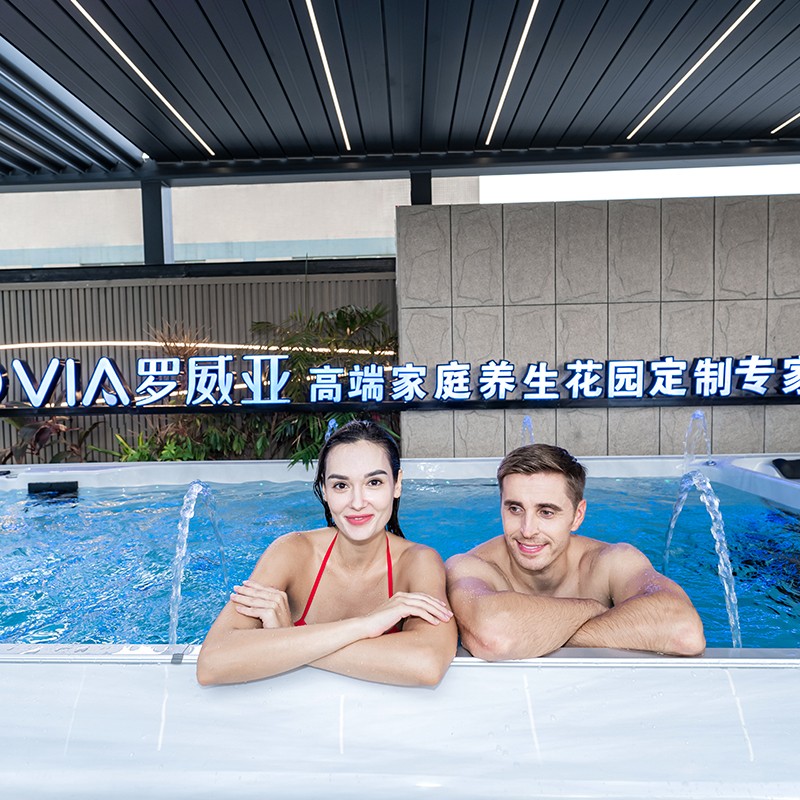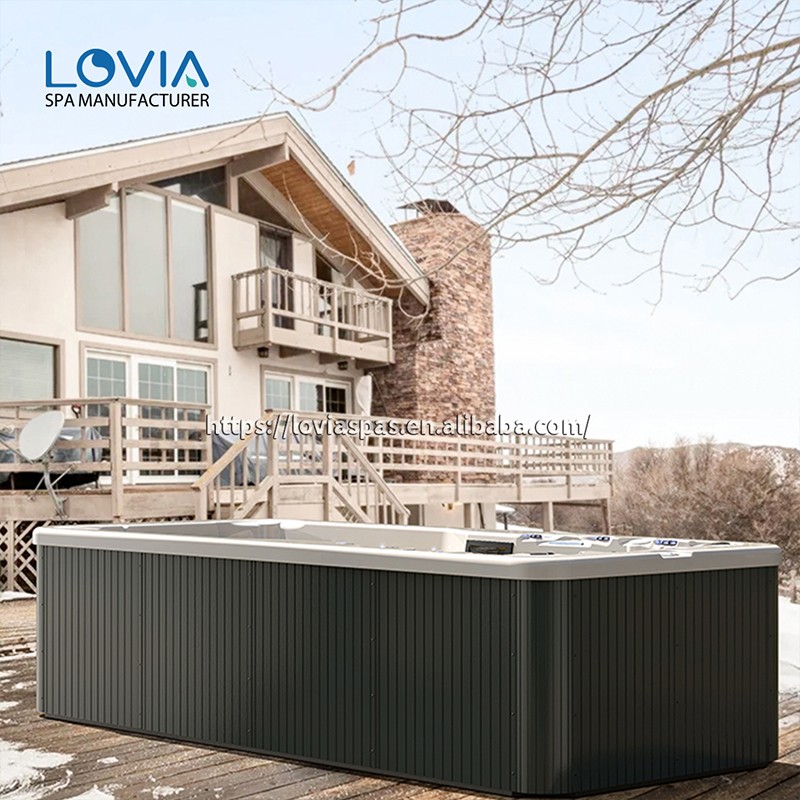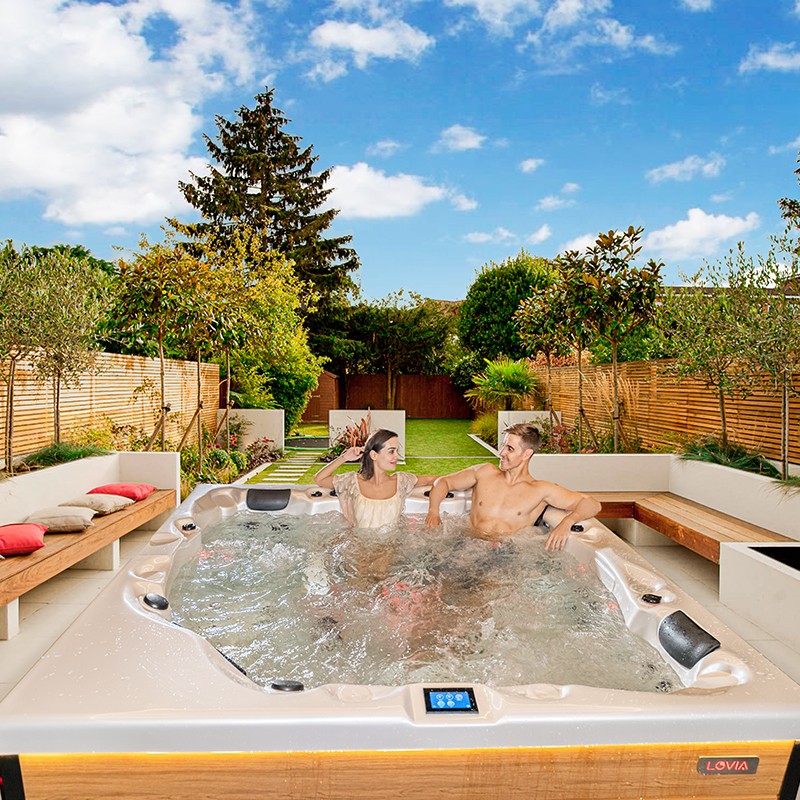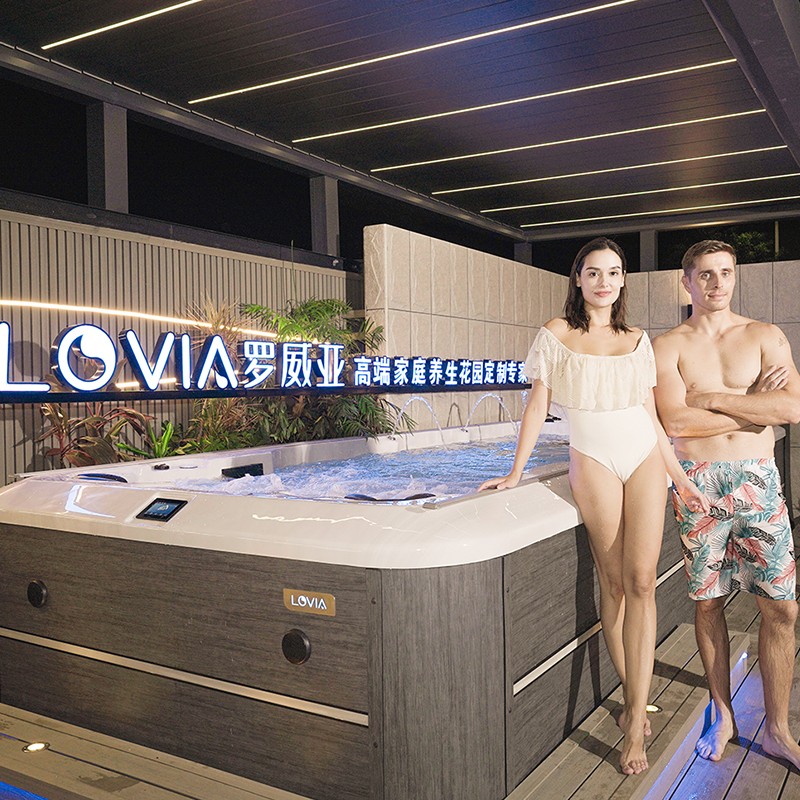
In what order should I add chemicals to a swim spa tub?
2025-10-25 15:35Swim spas, combining the exercise function of a traditional swimming pool with the relaxing experience of a hydrotherapy hot tub, are becoming increasingly popular in homes and fitness centers due to their multifunctionality, moderate size, and year-round use. Compared to standard swimming pools or hot tubs, swim spa tubs hold more water but are smaller than full-size pools. Their operating environment is more enclosed, resulting in higher water temperatures and faster water circulation. This unique structure places higher demands on water quality management techniques.
One of the most important questions is, "In what order should I add chemicals to a swim spa tub?" This seemingly simple question actually involves a wealth of knowledge regarding water chemistry principles, physical reaction sequences, and practical operational procedures. Incorrect addition sequences not only affect water quality but can also lead to chemical conflicts, water turbidity, the release of irritating gases, and even equipment corrosion.
This article will examine the water characteristics of swim spa tubs, detailing the principles for regulating water chemistry parameters and providing a recommended order and method for adding chemicals to ensure the water is always safe, clear, hygienic, and equipment-friendly.

Why is swim spa water management so complex?
Before formally discussing the order in which chemicals are added, it's important to understand the complexities of water management during swim spa operation.
1. Chemical reactions are more intense in high temperatures
The water temperature in a swim spa is typically maintained at 30–38°C, much higher than in a typical swimming pool. Higher temperatures accelerate chemical reactions, leading to faster decomposition of disinfectants and an increase in volatile compounds (such as chloramines). Therefore, water quality control requires more frequent and precise monitoring.
2. Closed water circulation system
Swim spas use a closed water circulation system, meaning that chemicals circulate evenly throughout the water quickly after addition. However, they also flow within the system. Improper ordering can easily lead to corrosion or blockage of pumps and heaters.
3. Medium water capacity and low tolerance for error
Swim spas typically have a capacity of 5,000–10,000 liters, smaller than a swimming pool but larger than a typical hot tub. Due to the limited water volume, any dosage error can result in significant concentration fluctuations.
In summary, swim spas have more stringent requirements regarding the type, sequence, and concentration of chemicals used.

What are the water chemistry parameters for swim spas?
To more scientifically determine the order of chemical addition, let's first list the key chemical parameters that affect swim spa water quality:
Index Name | Ideal range | Functions and Benefits |
pH | 7.2–7.6 | Maintains disinfection efficiency and user comfort |
Total Alkalinity (TA) | 80–120 ppm | Buffers pH changes and stabilizes water quality |
Total Hardness (CH) | 150–250 ppm | Prevents corrosion and scale formation |
Free Chloride | 1–3 ppm | Disinfects and sterilizes |
| Stabilizer (Cyanuric Acid) | 30–50 ppm | Prevents chlorine from being decomposed by sunlight |
| Metal Ion Concentration | 0 ppm is best | Prevents metal precipitation and staining |
It is important to understand that different chemicals have interdependencies and reaction priorities.
What is the recommended order for chemical addition?
The chemical addition sequence should strictly adhere to these principles:
1. Adjust alkalinity first
2. Adjust pH second
3. Adjust hardness
4. Remove metals
5. Add stabilizer
6. Add disinfectant
7. Perform maintenance by shock treatment
The following is a widely accepted chemical addition sequence that works for most swim spas. Please note that before each addition, measure the water quality and start the water circulation system to ensure adequate distribution of the chemicals.

Step 1: Adjust total alkalinity
Reason: Total alkalinity acts as a pH buffer for the water. Only when alkalinity is stable can pH adjustments be made without fluctuations.
Procedure:
· Use an alkalinity enhancer (such as sodium bicarbonate)
· Wait one hour after adding, continuously circulate the water, and remeasure
· Target value: 80–120 ppm
Step 2: Adjust pH
Reason: pH directly affects the effectiveness of disinfectants (such as chlorine) and user comfort. If the pH is too low, the water becomes acidic and corrodes metal components; if it is too high, the chlorine effect is impaired and the water becomes cloudy.
Procedure:
· If the pH is too low, use a pH enhancer (such as sodium carbonate)
· If the pH is too high, use a pH reducer (such as dry acid or sulfur dioxide)
· Target value: 7.2–7.6
· Tip: Alkalinity and pH should be adjusted slowly and periodically, measuring at intervals. Do not add excessive amounts at once.
Step 3: Adjust total hardness
Reason: Water that is too soft can corrode metal and plastic components, while water that is too hard can cause scaling and affect heating efficiency. Adjusting the hardness helps ensure long-term operation of the equipment.
How to:
· Use a "hardness enhancer" (calcium chloride)
· If the hardness is too high, do not treat it immediately; change the water regularly to dilute it.
· Target value: 150–250 ppm
Step 4: Add a metal remover (if metal contamination is present)
Reason: If the incoming water contains metal ions such as iron, copper, and manganese, they can easily deposit on the tub walls or nozzles, causing stains or discoloration.
How to:
· Use a metal neutralizer or metal precipitation inhibitor
· Circulate continuously for 4–6 hours after addition.
Step 5: Add a stabilizer (cyanuric acid)
Reason: Stabilizers protect chlorine from rapid degradation by ultraviolet light. This is especially important for outdoor swim spas.
How to:
· Use a "stabilizer powder" (cyanuric acid powder)
· Avoid adding too much at once; the ideal concentration is 30–50 ppm.
Step 6: Add the primary disinfectant (chlorine or bromine)
Reason: Adding chlorine or bromine after the base water quality has stabilized maximizes its disinfecting effectiveness and minimizes pH conflicts.
How to Use:
· Use trichlor tablets, dichlor powder, or liquid chlorine.
· For bathtubs using bromine, choose bromine pellets and use a bromine starter.
· After circulating for at least one hour, measure the "free chlorine" level to ensure it meets the standard.
Note: Chlorine and bromine cannot be mixed. A single system should be established from the outset.
Step 7: Shock Treatment
Reason: Shock treatment uses a high-concentration oxidant to remove organic matter, chloramines, and other substances, keeping the water clear and odor-free. It should be performed weekly or after frequent use.
How to Use:
· Use a non-chlorine shock agent or peroxide product.
· After adding, allow the water to circulate for 2–4 hours and suspend use of the bathtub.

Other Recommendations and Precautions
1. Do not change the order of additions at random
Failure to stabilize the total alkalinity before pH adjustment will cause significant pH fluctuations. Failure to adjust the pH before adding chlorine may cause the chlorine to lose its effectiveness quickly or react violently.
2. Add different chemicals at intervals
Chlorine-containing and acidic products, in particular, can produce irritating fumes if added simultaneously. It is recommended to circulate the water for at least 30–60 minutes after each addition.
3. The water circulation system must be running
The water pump must be running before, during, and after all chemical additions to ensure even distribution of the chemicals and prevent localized high concentrations from corroding components.
4. Avoid direct contact with the bathtub bottom
It is recommended to dissolve powdered chemicals in a bucket before adding them to the water to prevent particles from settling and burning the bathtub bottom material.
5. Regularly test water quality
Test basic indicators at least twice a week. If used frequently, test daily to ensure the disinfectant concentration and pH remain within the effective range.
What components are used in LOVIA SPA products?
LOVIA SPA uses high-quality components from trusted brands to ensure long-lasting performance. Our spas feature Aristech acrylic shells, Balboa and LX pumps, durable piping, jets, valves, drains, pillows, and reliable electrical systems. All components are certified under CE, ETL, SAA, ROHS, REACH, and ISO9001 standards.
Buyers seeking bulk purchases, wholesale options, or customized spa solutions can request factory quotes and enjoy competitive prices, promotions, and discounts.
